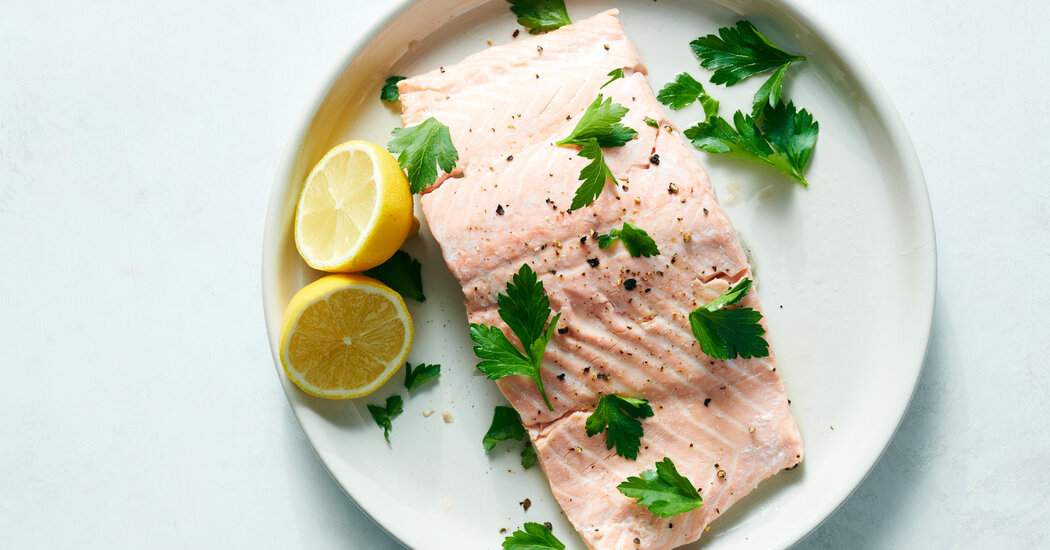Gary Weinstein, a retired lawyer, has lived in Manhattan for 30 years, and for most of that time, he has used his oven for storage. “It stares at me with mockery,” he said, gesturing to the forsaken pans inside.
His relationship with his microwave, however, is far more collegial. Mr. Weinstein relies on it to cook fresh food, particularly fish, for himself and his girlfriend. “I never really learned how to cook,” he said, “but I got where I could whip up a decent ginger flounder with snow peas, steamed salmon with leeks, and even a mushroom risotto.” Yes, he does all that in the microwave.
Since its introduction for private use as the “science oven” in 1967, the microwave has become nearly ubiquitous: Over 90 percent of American households now own one. And while it has been long relegated to reheating leftovers and making popcorn, it is undeniably the most unsung method of cooking fresh fish, particularly salmon. After a gentle learning curve, it is foolproof: Add salmon, water and salt to a microwave-safe dish, cover, cook for 3 or 4 minutes and let it rest for the same amount of time. What emerges are buttery flaky fillets, rich in flavor, that require no oil or messy cleanup, at the touch of a few buttons.
The best part? From start to finish, it takes about 10 minutes. You can even swap water for wine or stock, or throw spices or aromatics into the liquid to give the fish restaurant-quality seasonings without adding any time to the cooking process.
Microwaves are well suited to cooking fish because fish’s natural water content absorbs the appliance’s electromagnetic waves. Unlike conventional oven heat, which increases the air temperature surrounding the food, a microwave keeps the air cool and generates heat in the food through vibrations of water molecules. Because this internal agitation evaporates water, covering the food with a lid is essential for preserving moisture.
The presence of liquid is important to microwave cooking, said Ashim Datta, an engineering professor at Cornell University who has studied microwaves for over 40 years. “The microwave is perfect for boiled food.”
Stephanie Pass, founder of the food blog Just Microwave It, often makes salmon in the microwave, then turns it into a salad that she tucks into croissants. When she brings them to parties, guests devour them. “Everyone thinks they are so fancy,” she said. When they ask for the recipe, “they are shocked and always tell me they never would have thought to make fish in the microwave.”
When a nine-month gas leak repair in my apartment building rendered the stove useless, I started poaching salmon in the microwave. At first, it seemed very Wonka to throw this not inexpensive, potentially intimidating ingredient in a water-filled dish and expect culinary enchantment with the press of a button. The results, however, were indeed magical: splendidly pink with flakes of fish that fell like dominoes.
For those short on time or new to the kitchen, a microwave is like a reliable friend who is always up for a new adventure. For experienced cooks, that same friend just wants to see you more.







